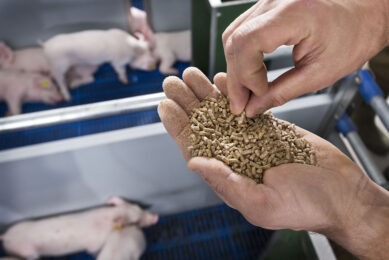Sources of fibre
To continue our discussion on fibre, let’s start by saying that selecting a proper source of fibre is as important as defining the right level of crude fibre in a diet, and for some, as crucial as having the proper definition of the word ‘fibre’ itself! So, it is safe to say that not all sources of fibre are the same. And, naturally, they do not cost the same…
To continue our discussion on fibre, let’s start by saying that selecting a proper source of fibre is as important as defining the right level of crude fibre in a diet, and for some, as crucial as having the proper definition of the word ‘fibre’ itself! So, it is safe to say that not all sources of fibre are the same. And, naturally, they do not cost the same…
Highly insoluble
First, we have the highly insoluble and largely indigestible source of fibre in the form of straw, be it from wheat, barley or any other cereal. The same applies to rice husks and any other high-lignin material.
These are definitely good materials for bedding, but they could also be used to provide some bulk in certain feeds and to promote digestive bowel movements.
Not many nutrients can be claimed from such ingredients, but they are usually cheap and in relatively moderate amounts can be used safely in diets for gestating sows.
That is, if they can be found in a ground/pelleted form, except of course when sows are housed in systems without crates, in which case, a straw feeder may be used to supplement the (more) concentrated feed.
Common sources
Second, we have the more common sources of fibre, which are also more digestible and in addition to their intestinal mechanical properties, they also offer a source of nutrients.
This is important again in sow diets, as in these animals microbial fermentation in the hindgut can become a substantial source of energy and other nutrients.
Such fibre sources include wheat bran, middlings and similar other cereal by-products. Soy husks are also an excellent source of fibre with similar properties.
To this group also belong ingredients such as beet pulp, citrus pulp, potato peel, grape seeds, and numerous other agro-industrial by-products, usually of very localised and(or) seasonal availability.
Lastly, alfalfa meal, although an expensive source of fibre, has been an ingredient of choice for pig diets in past times.
High-fibre ingredients
Third, we have the so-called high-fibre ingredients, which are used primarily as sources of protein. These include sunflower meal, cottonseed meal, corn gluten feed, distiller’s grains, and even substantial amounts of fibre can be found in ingredients such as soybean meal and most legumes.
Usually, the lower the protein value, the higher the fibre concentration.
Highly concentrated forms
Fourth, we have the highly concentrated forms of fibre. To this group belong ingredients rich in lignin, cellulose, and pectins.
They are usually commercial refined sources of one or more of these compounds, with low, medium, or high hygroscopic properties. The latter are quite important in that such ingredients are highly sought for gestating sow diets, but they must be avoided in lactating sow and growing pig diets.
The same of course applies for natural sources of fibre. For example, a well designed gestating diet may contain around 10% sugar beet pulp, but for a finishing pig more than 5% wheat bran may actually reduce feed intake due to high bulkiness.
Join 18,000+ subscribers
Subscribe to our newsletter to stay updated about all the need-to-know content in the pigsector, three times a week. Beheer
Beheer










 WP Admin
WP Admin  Bewerk bericht
Bewerk bericht